Abstract
In April 1982, Katsina, in Northern Nigeria, was affected by an outbreak of gastroenteritis associated with Vibrio cholerae serotype 'Ogawa' and 662 patients were admitted to the Katsina General Hospital during a 16-week period. The outbreak affected all ages and both sexes and all parts of the town and its immediate surroundings except the Government Residential Area (GRA). The overall case fatality rate was 7.7%. Male specific case fatality and female specific case fatality rates were 9.7 and 6.2% respectively. 'Adults' and those in the 11-20 and 21-30 age groups accounted for most of the cases. The epidemic curve was of a propagated and protracted nature. About 51.7% of all the patients spent between 2 and 5 days in the hospital. A similar pattern was observed for all age groups regardless of sex. Cholera vibrio 'Ogawa', Shigella spp., Salmonella spp., Proteus spp. and Escherichia coli were isolated from 16 patients. All well-water samples obtained from the compounds of the cases were contaminated with MPN/100 ml index ranging from 540 to greater than 2400. All samples were positive for faecal coliforms. Salmonella spp., Shigella spp., Proteus spp. and non-O, group 1 (non-O 1) V. cholerae were isolated. Water sellers probably facilitated the spread of the outbreak.
Full text
PDF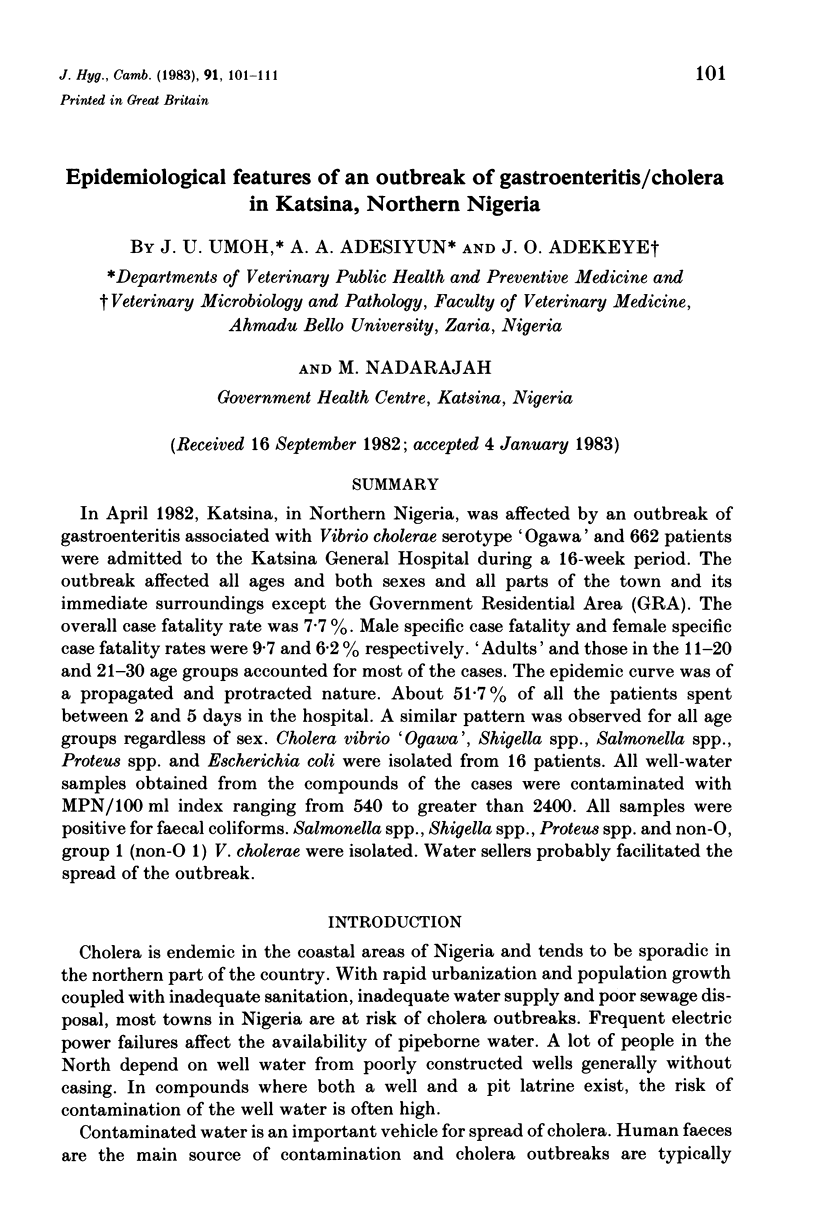
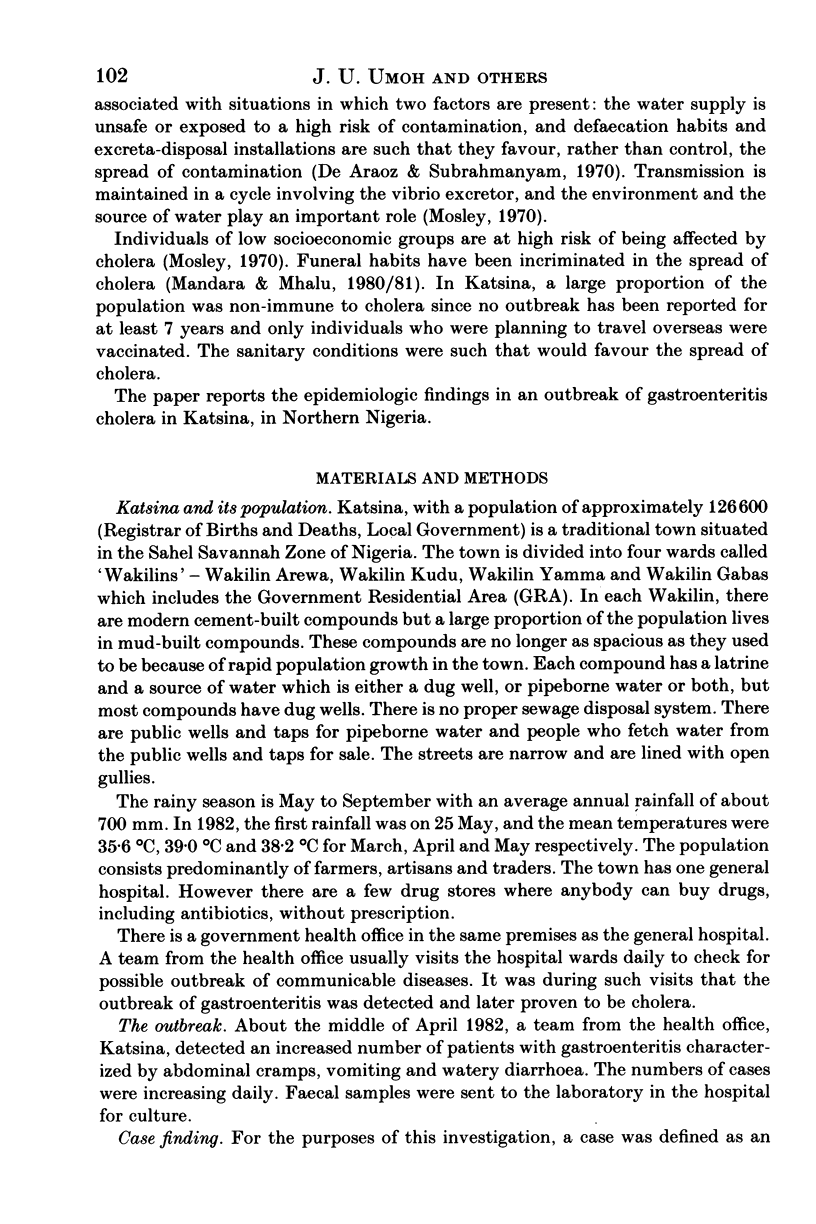
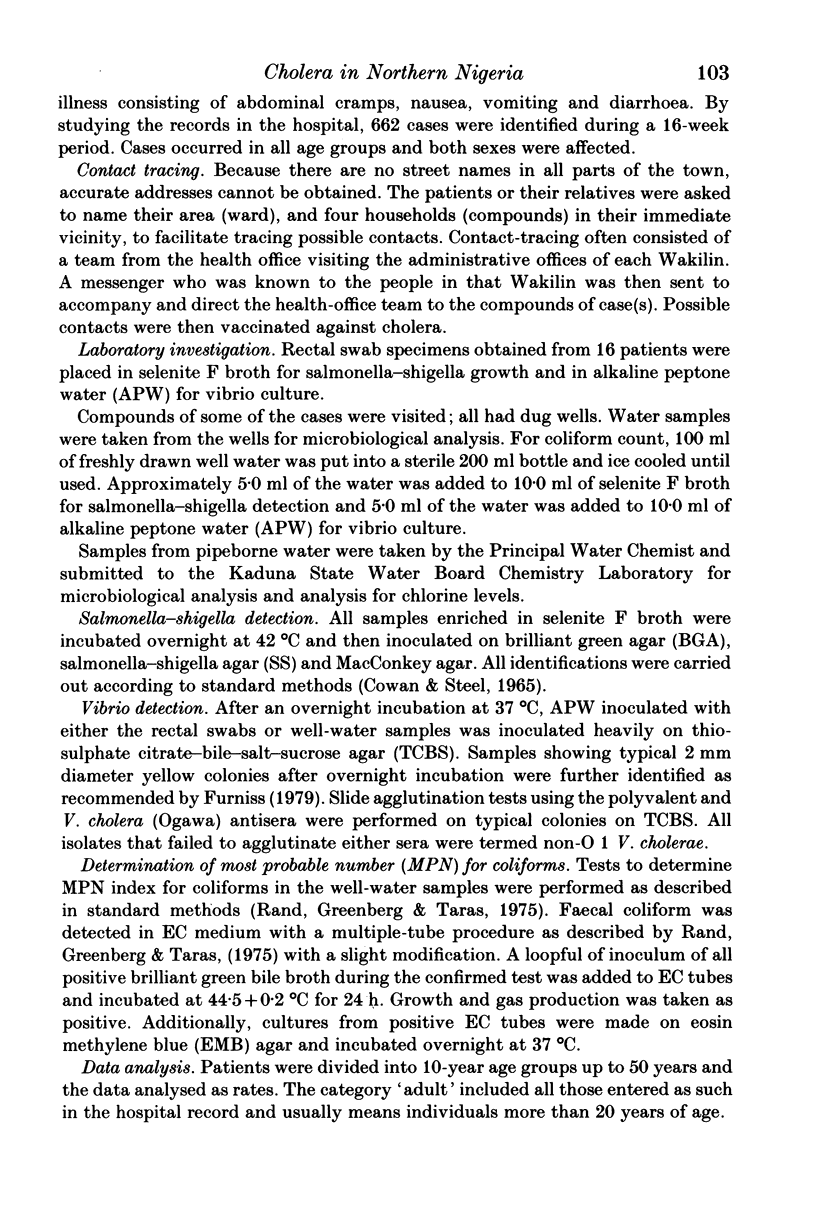
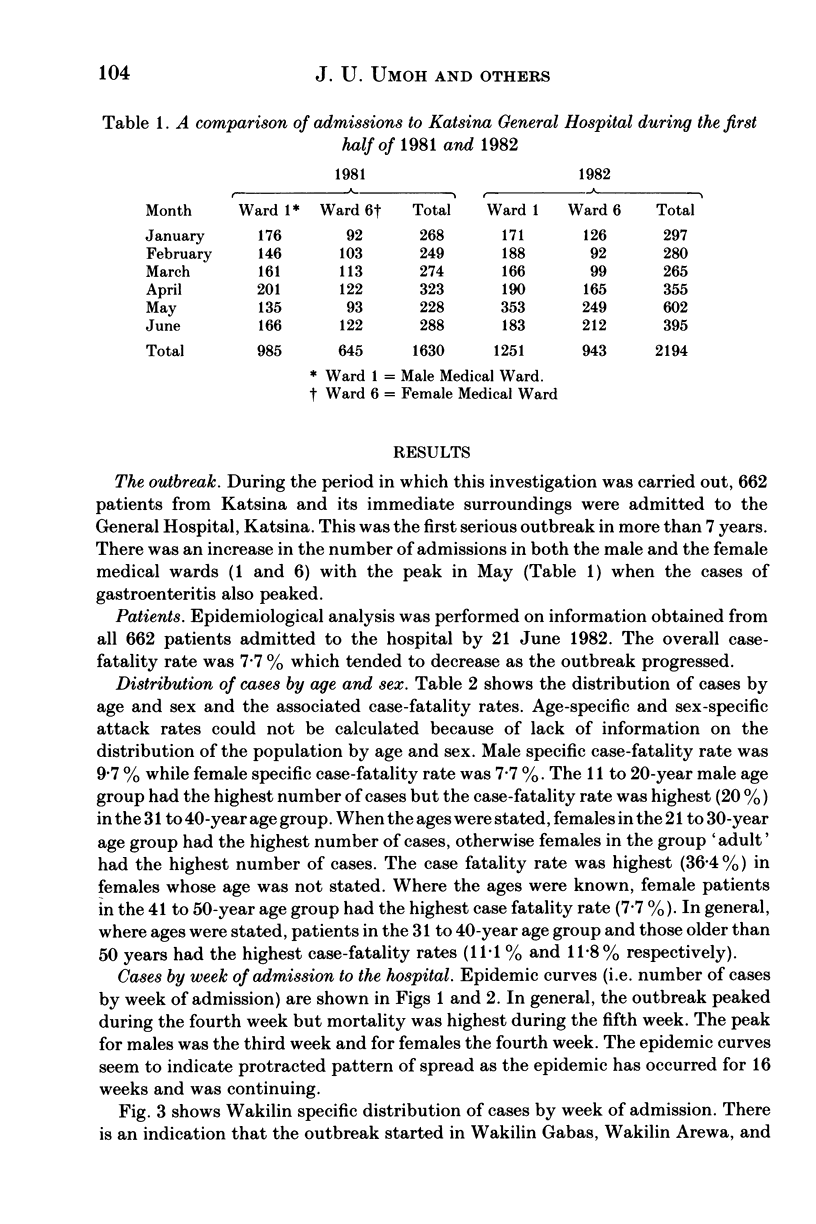
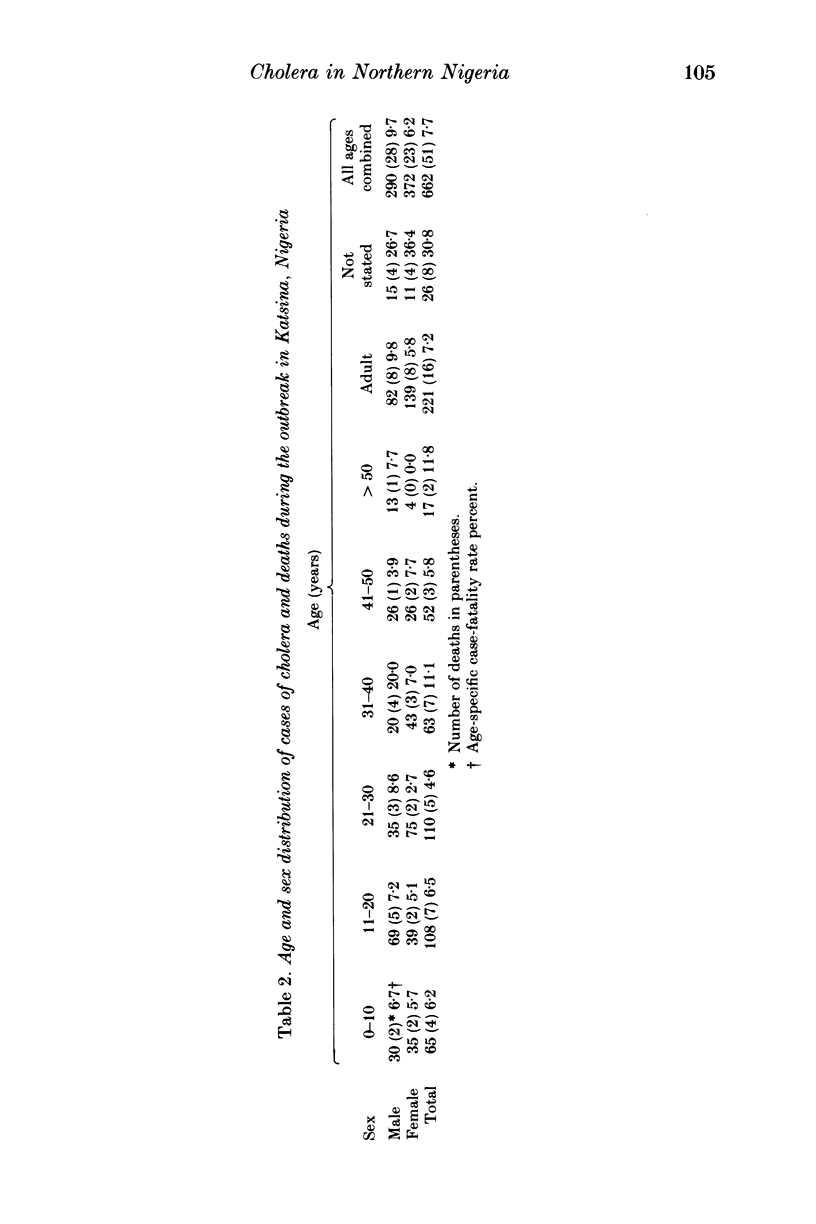
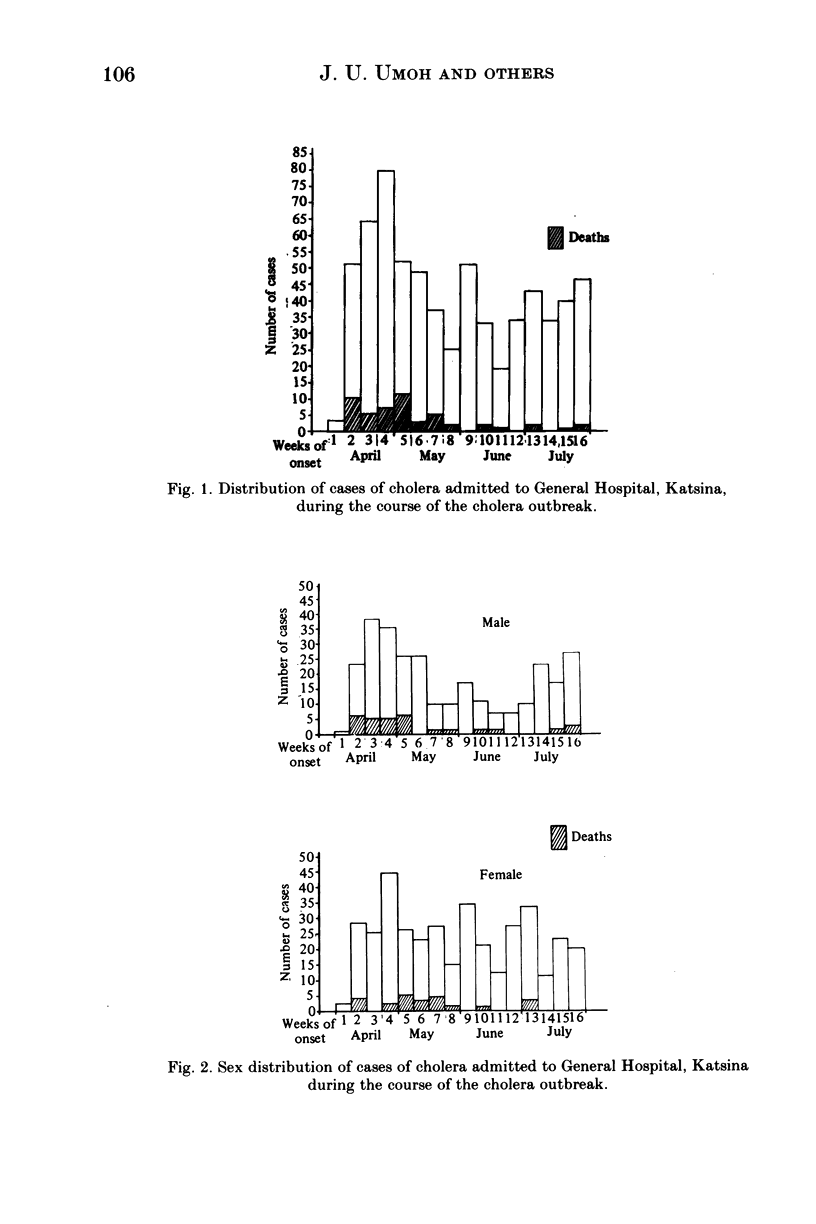
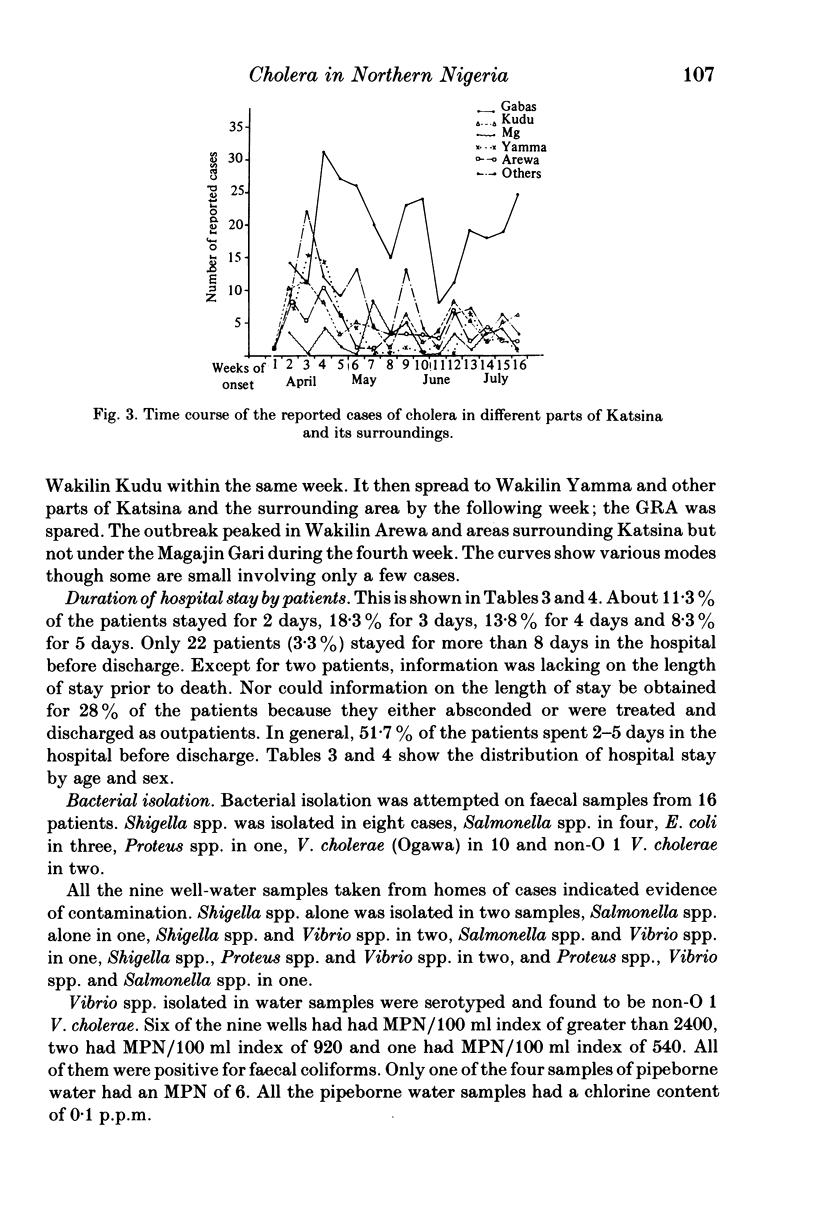
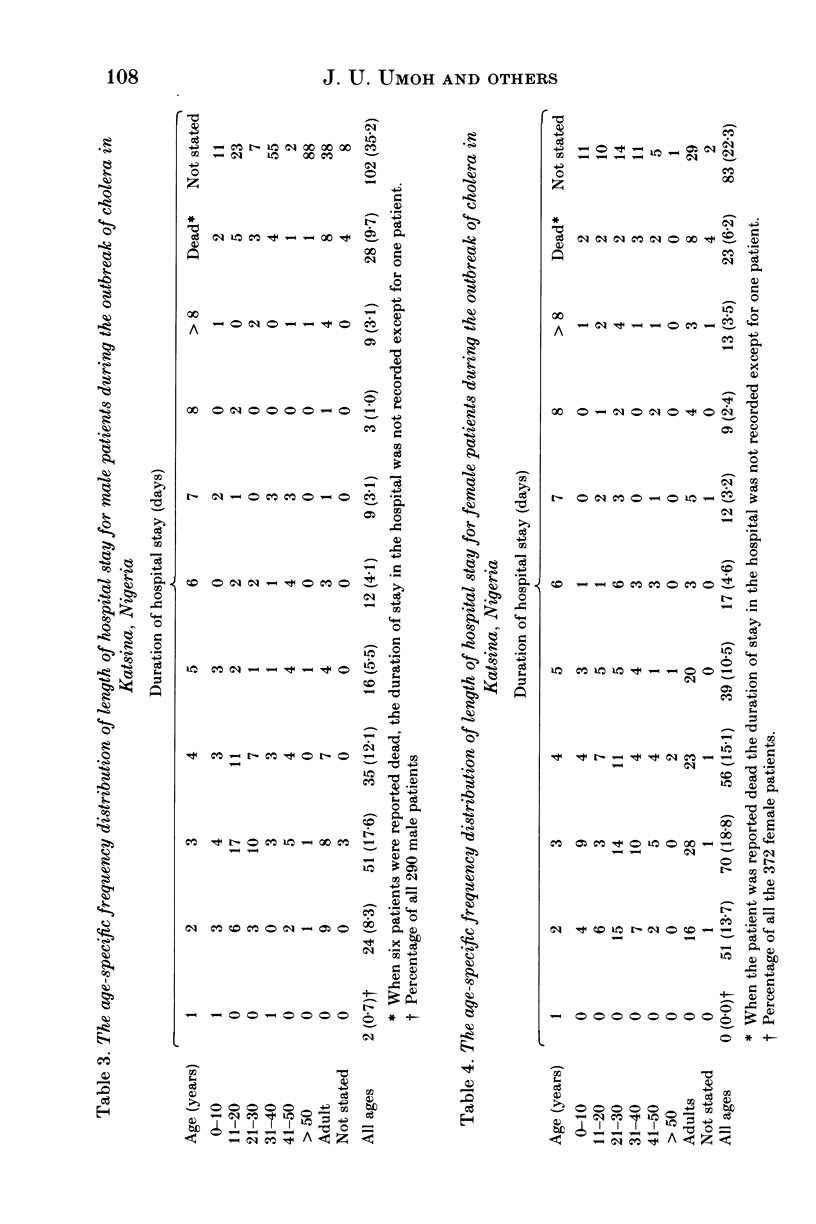
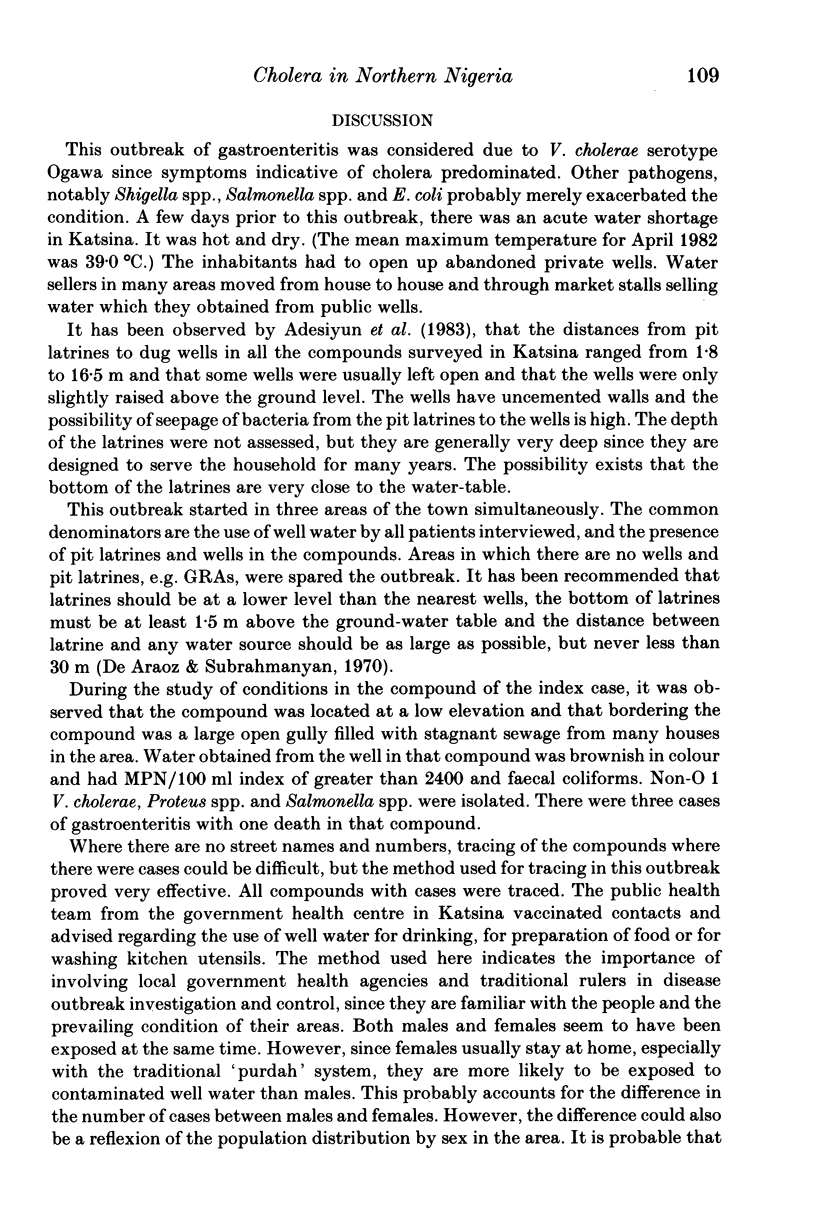
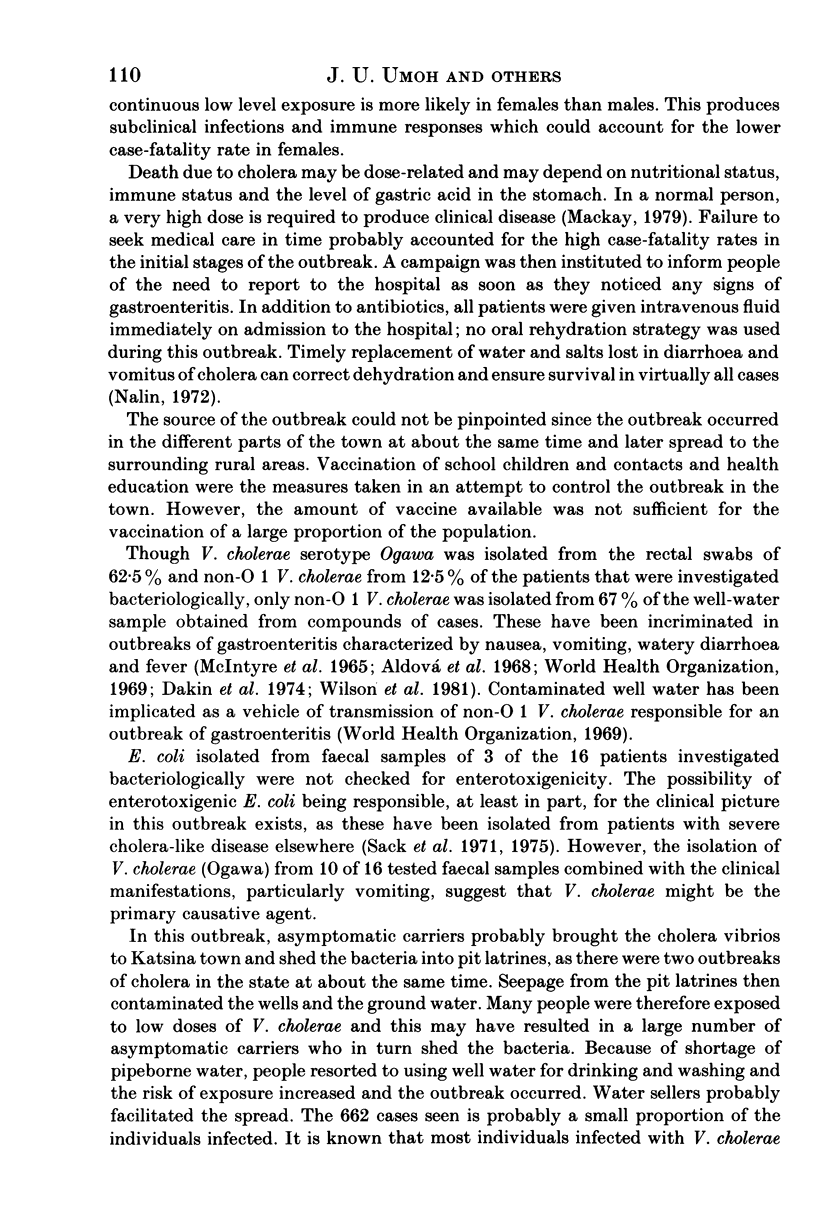
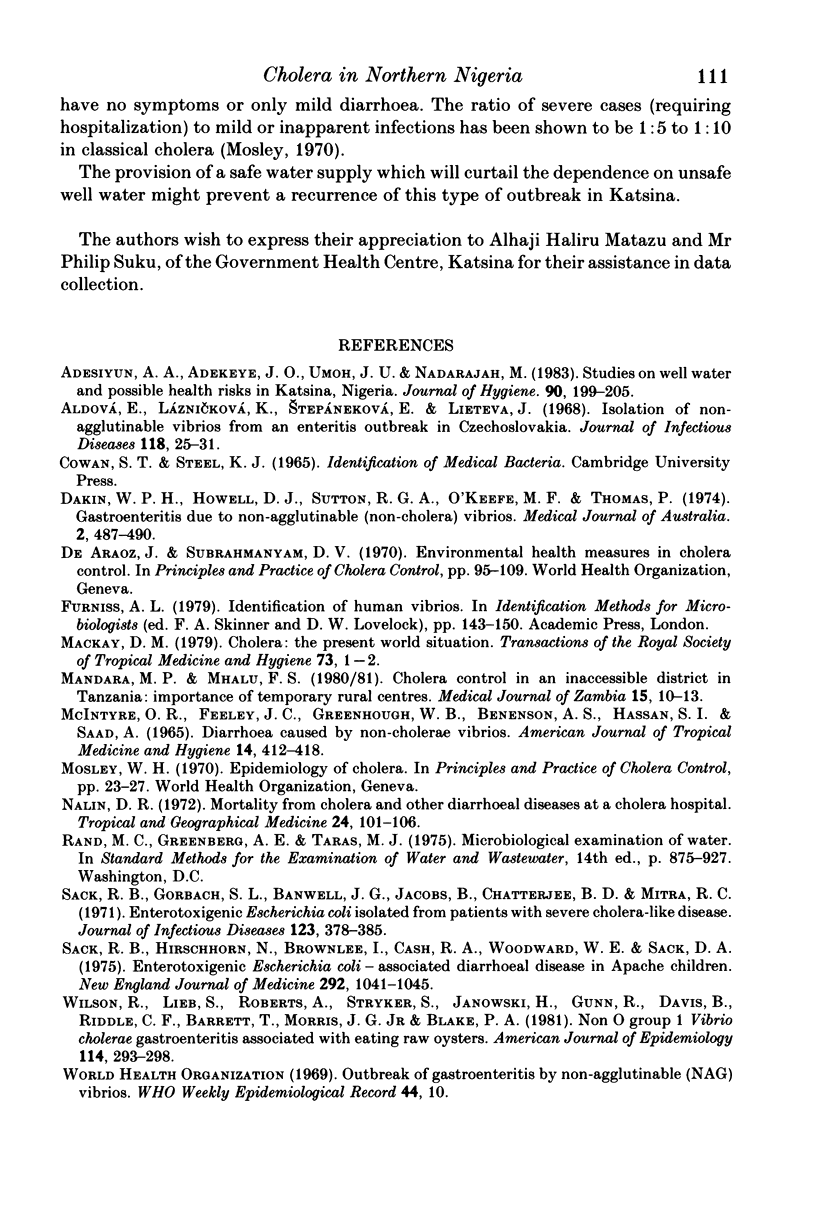
Selected References
These references are in PubMed. This may not be the complete list of references from this article.
- Adesiyun A. A., Adekeye J. O., Umoh J. U., Nadarajab M. Studies on well water and possible health risks in Katsina, Nigeria. J Hyg (Lond) 1983 Apr;90(2):199–205. doi: 10.1017/s0022172400028862. [DOI] [PMC free article] [PubMed] [Google Scholar]
- Dakin W. P., Howell D. J., Sutton R. G., O'Keefe M. F., Thomas P. Gastroenteritis due to non-agglutinable (non-cholera) vibrios. Med J Aust. 1974 Sep 28;2(13):487–490. doi: 10.5694/j.1326-5377.1974.tb70935.x. [DOI] [PubMed] [Google Scholar]
- MCINTYRE O. R., FEELEY J. C., GREENOUGH W. B., 3rd, BENENSON A. S., HASSAN S. I., SAAD A. DIARRHEA CAUSED BY NON-CHOLERA VIBRIOS. Am J Trop Med Hyg. 1965 May;14:412–418. doi: 10.4269/ajtmh.1965.14.412. [DOI] [PubMed] [Google Scholar]
- MacKay D. M. Cholera: the present world situation. Trans R Soc Trop Med Hyg. 1979;73(1):1–2. doi: 10.1016/0035-9203(79)90118-4. [DOI] [PubMed] [Google Scholar]
- Mosley W. H. Epidemiology of cholera. Public Health Pap. 1970;40:23–27. [PubMed] [Google Scholar]
- Nalin D. R. Mortality from cholera and other diarrhoeal diseases at a cholera hospital. Trop Geogr Med. 1972 Jun;24(2):101–106. [PubMed] [Google Scholar]
- Sack R. B., Gorbach S. L., Banwell J. G., Jacobs B., Chatterjee B. D., Mitra R. C. Enterotoxigenic Escherichia coli isolated from patients with severe cholera-like disease. J Infect Dis. 1971 Apr;123(4):378–385. doi: 10.1093/infdis/123.4.378. [DOI] [PubMed] [Google Scholar]
- Sack R. B., Hirschhorn N., Brownlee I., Cash R. A., Woodward W. E., Sack D. A. Enterotoxigenic Escherichia-coli-associated diarrheal disease in Apache children. N Engl J Med. 1975 May 15;292(20):1041–1045. doi: 10.1056/NEJM197505152922001. [DOI] [PubMed] [Google Scholar]
- Wilson R., Lieb S., Roberts A., Stryker S., Janowski H., Gunn R., Davis B., Riddle C. F., Barrett T., Morris J. G., Jr Non-O group 1 Vibrio cholerae gastroenteritis associated with eating raw oysters. Am J Epidemiol. 1981 Aug;114(2):293–298. doi: 10.1093/oxfordjournals.aje.a113194. [DOI] [PubMed] [Google Scholar]


